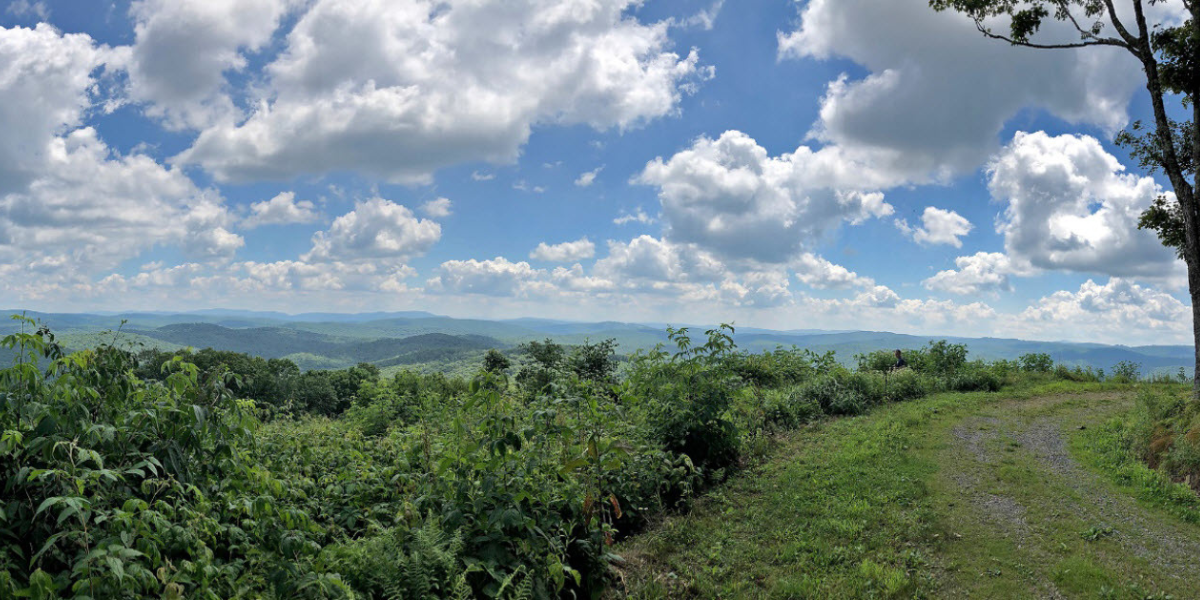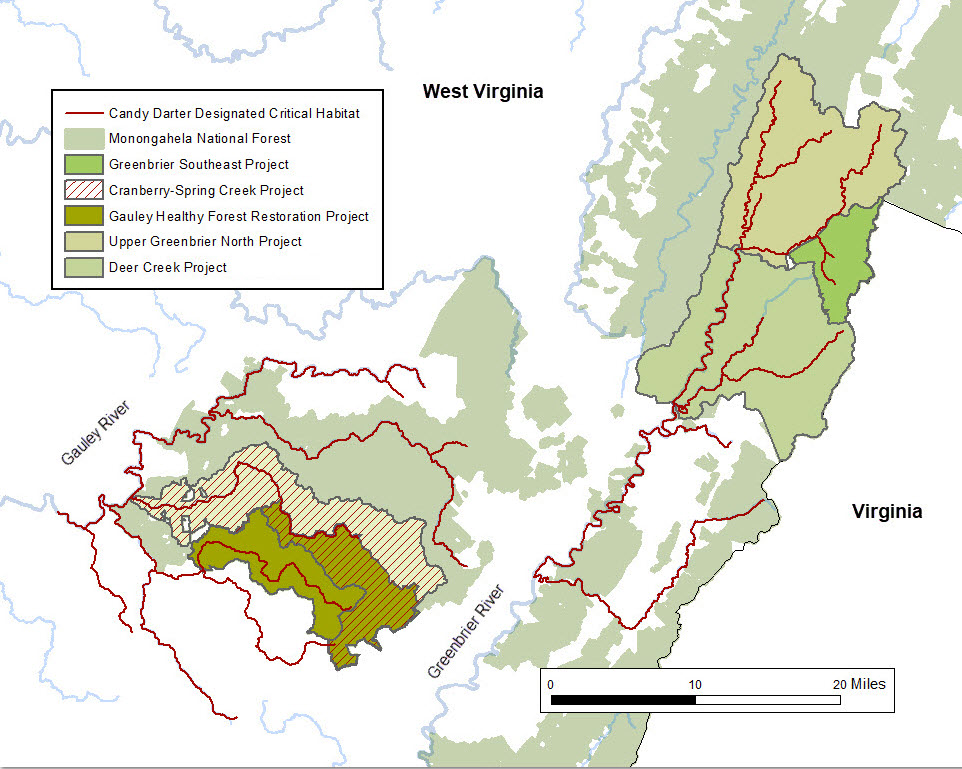By Rick Webb
With the assistance of Appalachian Mountain Advocates, the West Virginia Highlands Conservancy has asked a United States District Court to require Forest Service compliance with National Environmental Policy Act (NEPA) review requirements before proceeding with the Greenbrier Southeast Project, a Monongahela National Forest management proposal involving extensive steep-slope earth disturbance and commercial clearcutting in watersheds that support native brook trout and the endangered candy darter.
The Conservancy’s complaint, a catalog of project-related documents, and a web map with project details and environmental context can be accessed at the Allegheny-Blue Ridge Alliance’s Conservation Hub site.
The complaint raises issues that were raised early in the review process, including in our January 2022 objection to the project. In particular:
- The Forest Service failed to describe and evaluate the existing baseline condition of the aquatic habitat.
- The Forest Service is relying on erosion and sediment control measures that are not practicable during active construction and use of the logging road/skid-trail system.
- The Forest Service failed to consider the cumulative effects of multiple projects affecting designated critical habitat of the candy darter.
It is significant that the Forest Service failed to consider the baseline information provided by its own aquatic habitat monitoring program. The data show that most of the streams in the forest are degraded and trending negatively with respect to chronic sedimentation. The Conservancy called for a meaningful analysis of the existing problem before proceeding with a new project that may add to the problem.
The forest supervisor responded to the Conservancy by claiming that elevated sedimentation in National Forest streams results from natural processes and that Forest Service management is not among the causes of the problem. However, the data and analysis provided by the supervisor do not support this contention. See July 2022 Highlands Voice article for more on the sedimentation issue.
Chronic stream sedimentation—meaning infilling of the stream bed with fine sediment—is an issue that requires the attention of those who are working to preserve and restore the Highlands. Cool mountain streams with clean gravel and cobble streambeds only occur in association with healthy forests and functioning watershed systems. Something is wrong with the forest when something is wrong with the streams.
Other issues can be raised concerning the way the Forest Service has conducted its review and planning process for the Greenbrier Southeast Project.
A lack of transparency is one issue. The Draft Environmental Assessment for the project relied on conclusions based on a Biological Assessment prepared by the Forest Service that was not made available to the public until after the comment period. Additionally, the analysis relied on to demonstrate that National Forest management is not responsible for stream sedimentation was not entered in the project record until the administrative review process concluded.
Another issue is the Forest Service failure to examine a range of project alternatives as required by NEPA. For the Greenbrier Southeast Project, the Forest Service only addressed two alternatives: implement the project as planned (including more than 1,600 acres of clearcutting and 50 miles of skid road construction); or do not implement the project. The Forest Service must also look at project alternatives that prioritize ecological and watershed integrity, climate change mitigation, resilience to climate change, and protection and preservation of endangered species and other at-risk species and biological communities.
The complaint focuses on the very real issue of sedimentation and its potential impacts on an endangered species, the candy darter, which has already lost half of its original distribution due to sedimentation. A proper NEPA review would address that problem, as well as a broad range of National Forest management issues.



